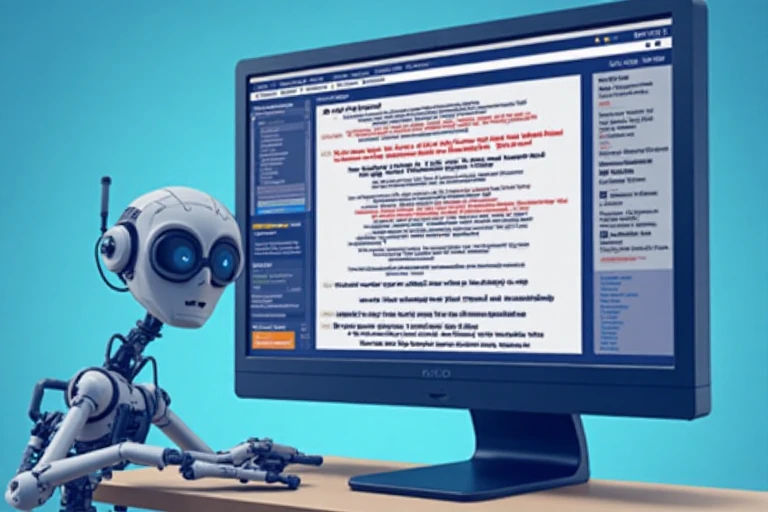What Is Machine Learning? A Simple Explanation for Beginners
Difference between ML, AI, and Deep Learning
In today’s tech-driven world, you’ve probably heard terms like Artificial Intelligence (AI), Machine Learning (ML), and Deep Learning (DL) floating around. These concepts are often used interchangeably, but they actually represent different levels of technology, each with its own purpose and use case. Let’s break down what each of them means, in simple terms, and look at everyday examples to help you understand their differences.

1. Artificial Intelligence (AI)
AI refers to the broad concept of creating machines or systems that can perform tasks that would typically require human intelligence. This includes decision-making, problem-solving, language understanding, and perception.
Example in Everyday Life:
- Siri or Google Assistant: When you ask your phone a question, AI is what helps it understand your speech, process the information, and give you an answer.
- Navigation apps (like Google Maps): AI helps you find the best route by considering traffic, road closures, etc.
2. Machine Learning (ML)
Machine Learning is a subset of AI. It’s the idea that machines can learn from data, without being explicitly programmed for each task. In other words, instead of telling a computer exactly what to do, you feed it data, and it figures out patterns and improves over time.
Example in Everyday Life:
- Netflix or YouTube Recommendations: When Netflix suggests shows you might like, it’s using machine learning to understand your viewing habits and preferences.
- Email Spam Filters: ML helps identify whether an email is spam or not by learning from patterns in emails you’ve received in the past.
3. Deep Learning
Deep Learning is a subset of Machine Learning. It focuses on using large neural networks (inspired by how our brains work) to process vast amounts of data. These networks learn from very large datasets and can handle more complex tasks like image recognition or natural language understanding.
Example in Everyday Life:
- Face Recognition: The face recognition feature in your phone is powered by deep learning. It analyzes the unique features of your face to unlock your phone.
- Self-Driving Cars: Deep learning helps these cars “see” the world around them and make decisions based on complex data (like detecting pedestrians, road signs, etc.).
What Is Machine Learning?
How Machines Learn: The Big Idea
Machine learning is about teaching computers to learn from data, just like humans learn from experience. Instead of telling machines exactly what to do, we provide examples, and they find patterns on their own.
Imagine teaching a child to recognize animals by showing pictures of cats and dogs. Over time, the child learns to tell them apart. This is similar to how machine learning works. We give the machine lots of examples (data), and it learns from them.
Example: Predicting Ice Cream Sales from Temperature
Let’s say you own an ice cream shop. You want to predict how many ice creams you’ll sell based on the temperature. You collect data like this:
- 70°F -> 100 ice creams sold
- 85°F -> 150 ice creams sold
- 60°F -> 80 ice creams sold
The machine looks at this data and identifies that higher temperatures mean more ice creams sold. Based on this pattern, it predicts that when the temperature reaches 90°F, you might sell 170 ice creams.
Types of Machine Learning: Supervised, Unsupervised, and Reinforcement Learning
Machine learning (ML) can be broken down into three main types: Supervised Learning, Unsupervised Learning, and Reinforcement Learning. Each of these types is suited to different tasks, and understanding them is crucial to grasping how machines learn.
1. Supervised Learning: Learning with Guidance
In Supervised Learning, the machine learns from labeled data. Think of it as a teacher guiding the student with correct answers. The data is already labeled, so the machine can learn to predict or classify based on examples.
Spam Detection in Email: You show the machine emails labeled as spam or not spam, and it learns to identify new emails based on this data.
2. Unsupervised Learning: Learning without Labels
In Unsupervised Learning, the machine tries to find patterns in data without any labels or guidance. It’s like a student trying to group things together without being told what they are.
Customer Segmentation: A store uses unsupervised learning to group customers into categories based on their purchasing behavior without knowing beforehand what those groups are.
3. Reinforcement Learning: Learning by Trial and Error
In Reinforcement Learning, the machine learns through a system of rewards and penalties. It’s like teaching a dog tricks by rewarding it for the right actions and correcting it for the wrong ones.
Self-Driving Cars: A self-driving car learns to navigate by receiving positive feedback when it makes good decisions (e.g., avoiding obstacles) and negative feedback when it makes mistakes.
Features and Labels: The Language of Machine Learning
In machine learning, we use features and labels to communicate with the model.
- Input (Features): These are the variables the machine uses to make predictions or decisions. Think of them as the clues you provide.
- Output (Labels): The answer or result the machine is trying to predict or classify.
Real-World Example: Email Spam Detection
- Features: The machine looks at various factors like the sender’s address, subject line, or content of the email.
- Label: Whether the email is spam or not spam.
Training, Testing, and Overfitting: Simple Analogies for Machine Learning
Training a Model:
Training a machine learning model is like preparing for a test. You provide data for the machine to learn from, just like a student studying for an exam.
Example: You train the model by showing it emails (labeled as spam or not) so it can learn to distinguish between the two.
Testing the Model:
Testing is like taking a mock exam. You evaluate how well the model performs using new, unseen data to check if it can generalize its knowledge.
Overfitting vs Underfitting: School Exam Analogy
Overfitting: This is like memorizing answers to specific questions for a test without truly understanding the subject. It’s great for the specific questions you studied, but it doesn’t work well with new, unseen questions. The model becomes too focused on the training data and performs poorly on new data.
Example: If the machine only learned to identify very specific spam emails it was trained on, it might struggle to classify new types of spam.
Underfitting: This happens when the model is too simple and doesn’t learn enough from the data, like a student who studies only a little for the exam and fails to answer most questions.
Example: If the model doesn’t learn enough from the email data, it might misclassify spam emails as not spam, or vice versa.


